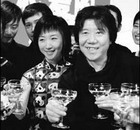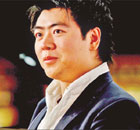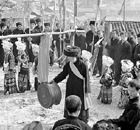Delicacies
Spring rolls - food for a new season
By Wu Wencong (China Daily)
Updated: 2011-02-08 07:36
 |
Large Medium Small |
|
Spring rolls are harbingers of the growing season. Wu Wencong / China Daily |
Beijing
In Beijing, it is customary to eat spring rolls at the Beginning of Spring or li chun, the first in a series of 24 solar terms on the Chinese almanac. And as they feast on the tasty wraps, diners silently send out prayers for a fresh year without disease or disaster.
The Beginning of Spring also coincides with the first few days of the Lunar New Year, and so you will find families gathering for a feast of these tasty rolls.
The thin, round pancakes act as wrappers, and they must be thin enough to see through to read, yet springy enough to hold the filling without breaking or tearing.
Typical fillings may include scrambled eggs with thinly sliced leek, stir-fried bean sprouts and pork cooked in soy sauce.
The tradition of eating spring rolls or chun juan originated in the Ming Dynasty (AD1368-1644).
Green vegetables signaled the arrival of spring, and so the eating of these spring rolls came to signify the beginning of the new season.
"Spring is the time to sow. People wanted to keep longer at farm work, so they ate the rolls while working, and the vegetables in the filling represented the season," says Wang Zuoji, a 71-year-old expert on Beijing culture and folk arts.
It can get really hard to find a restaurant serving the genuine article during the Spring Festival. Cooking at home may be the better option.
The traditional way to make the pancake wrappers is complex and tedious, but since my family bought a pan specially made for the pancakes, making this dish has become part of the festive family tradition.
My mother would first stir an egg into flour, then slowly add water and stir in one direction until it looks like thick cream.
She'll leave it to sit for an hour or two to develop the springy texture we want. Then the batter is transferred to a wide, flat platter.
Unlike traditional pans, the pancake maker has a convex surface. We have to oil the surface of the pan before making the first pancake.
We have to hold the handle of the pan and dip the hot oiled surface into the batter, removing it after a quick dip. The thin layer of batter will cook and the edges of the pancake will start to curl after just three seconds.
The pancake is then slowly lifted off the pan and placed on a plate while the rest of the wrappers are being made. The fillings are then spooned on the pancake and wrapped up.
It's an easy process but that is the taste of spring, the satisfying taste of happiness.
China Daily
(China Daily 02/08/2011 page9)











